How to Make Tassels for Your Next Craft Project

By Judy Schumer
Learn how to make tassels and you’ll become a decorating diva in no time. Tassels add flair to so many different decorating projects! They can turn an ordinary pillow into an exotic throne embellishment, a regular blanket into a stunning decorative accent, and something as simple as a curtain tie into a standout accessory.
Making tassels is an easy task, and you have multiple choices for materials to go with the project you have in mind. You can use silky embroidery thread, rustic twine, or even beads to dress up your decor—giving each project your own signature style.
Read on to find out how to make tassels and give your home decor a beautiful update in no time!
Photo via Zest it Up
What Types of Thread to Use for Tassels
You can use many different thread types to make tassels, and choosing one can depend on the item you’re attaching the tassel to. If you want bold colors with a rich texture, embroidery thread is perfect, but if you need a more rustic feel, you may want to consider twine. The following threads all work well when making tassels:
Embroidery Floss
Also called embroidery thread, this type offers the largest variety when it comes to colors. It’s also a sturdy choice since each strand (or floss) is made up of six individual separate strands (or threads).
You can leave the strands intertwined, but separating them will make for a fluffier tassel. Embroidery floss usually comes in small packets, with a single paper band around it. Embroidery floss tassels are some of the easiest tassels to make.
Pearl Cotton
This thread is heavier than a single strand of embroidery thread because it has two strands intertwined, which are not meant to be separated. It has a shiny pearl effect with a visible texture, making it a beautiful choice for use in a tassel. Pearl cotton is usually sold wrapped around a roll.
Twine
Twine can vary in thickness and type of fiber. This type of string is most often made from wool, sisal, jute, or hemp and is used to make rustic-looking tassels. Twine can shrink quite a bit in the wash, so keep that in mind when choosing what to attach twine tassels to.
Yarn
Yarn is the thread to use if you want soft, fluffy tassels. Made of either wool or acrylic, it comes in an endless amount of colors, and the variegated colors are lovely on blankets.
Beading Cord
If you’re making beaded tassels, the best thread to use is beading cord. This type of thread is strong enough to hold the weight of the beads and is tightly woven to make stringing beads easy.
Crochet Thread
If you’ve seen ivory or white lace doilies, you’ve seen the type of art that crochet thread creates. It is a fine thread, less thick than most embroidery floss. This is an exquisite thread to use when making tassels for lampshades or any vintage-inspired project.
How to Make Tassels Out of Yarn or Embroidery Thread
Yarn and embroidery floss are the most commonly used materials to make tassels. With both yarn and embroidery thread, you can match colors and textures easily or create bold contrasts for eye-popping, one-of-a-kind decor. Choose your favorite thread or yarn and follow these tassel-making steps:
Tools and Materials Needed:
- Sturdy cardboard
- Craft scissors
- Yarn or embroidery thread
- Ruler
- Cellophane tape
- Small, heavy object such as a book
- Sewing scissors
- Yarn needle
- Fabric glue
Step 1: Prepare the Cardboard
Decide how long you’d like your tassel to be. Once you’ve determined the length, cut a six-inch-wide piece of cardboard that is double the height of your chosen length. For this example, we are going to walk through how to make a six-inch-long tassel, so you’d cut the cardboard to six inches wide and 12 inches tall.
Fold the cardboard in half so that it’s half the original length, making it the desired length of your tassel. If laid flat, the folded end will face downwards, with the open end facing up.
Step 2: Place the Tassel Tie
Cut a 12-inch piece of yarn or embroidery thread. Open the folded cardboard and lay the strand horizontally across the cardboard about two inches below the top end of the cardboard. Use a tiny piece of cellophane tape on each end to hold the string in place. Close the folded cardboard once again. This piece, once covered in yarn, will be the tassel tie.
Step 3: Wrap the Tassel
In a lengthwise motion, wrap the yarn or embroidery thread around and around the cardboard. Hold the end of the yarn or thread with your thumb until you’ve wrapped around enough to cover the end of the thread. Keep wrapping, about 70-80 times—count by tens to make it easier!
Step 4: Tie the Top
Lay the thread-wrapped cardboard flat, placing a small, heavy object on top. Take the tape off the ends of the single piece of thread or yarn near the top of the cardboard form. Pull the thread upwards toward the opening at the top of the folded cardboard. Tie a knot in the yarn or embroidery thread with the knot at the bottom—you want to gather your yarn or thread together instead of forming a loop. The loose ends will be used to attach the tassel to your project.
Step 5: Cut the Tassel Bottom
Use your scissors to cut a straight line through the wound thread or yarn along the fold at the bottom of the cardboard form. Your tassel will no longer be attached to the cardboard. If needed, adjust the bundle to center it in the middle of the tassel tie, then tie two more knots in the tassel tie to secure the bundle of yarn or thread. This bundle is your tassel yarn.
Step 6: Make the Tassel Neck
Cut a new piece of yarn or thread about 36 inches long (or about six times the length of your tassels). You can always cut any extra away if needed. Fold the piece of thread in half and simultaneously thread both cut ends through the eye of the yarn needle.
Slide the needle about halfway down the length of the folded thread. Lay the needle and thread on a flat surface, with the cut ends of the thread on the right side. The point of the needle will face upwards. This is your wrapping yarn.
Fold the bundle of tassel yarn or thread in half, with each side equal in length. Lay down the bundled yarn or thread on top of the threaded needle, placing the top of the bundle ½ inch above the eye of the threaded needle, on the left-hand side of the needle. The top of the bundle will form the head of the tassel, while the yarn wrapping around it will form the neck.
Take the needle and carefully push the tip of it all the way through the loop on the left-hand side. By doing this, you’ll be circling the bundle with the doubled piece of thread in your needle. Pull tightly to secure the bundle. Loop the wrapping yarn around the neck about ten more times, pulling the yarn or thread tightly each time.
When you’ve finished the wrapping, push the needle through the center of the wrapped yarn or thread, coming out the other side. Pull tight, then trim the excess. Put a drop of fabric glue on the end of the piece you’ve just cut and attach it to the wrapped top of the tassel.
You’re now ready to add your tassel to your project!
Photo via Chelsea @ Making Manzanita
How to Make Leather Tassels
Leather tassels are a wonderful addition to curtain tiebacks and furniture like ottomans, and they add a refined element with their classic texture and clean lines. Gather a few easy-to-find supplies and follow the steps below for fringed leather tassels.
Tools and Materials Needed:
- Leather or suede, about 12 inches tall and 3 inches wide
- Sharp scissors
- Thick craft glue
- Rubber band
Step 1: Cut the Leather to Size
You’ll need to cut two pieces of leather: one for the tassel and one for the tassel loop.
For a medium-sized tassel, cut a rectangle about nine inches tall and three inches wide. This is your tassel piece. You can go larger or smaller depending on the final project you’ll be using the tassel on.
Cut a ¼-inch-wide and three-inch-tall strip of leather for the tassel loop.
Step 2: Cut the Fringe
On the largest leather or suede rectangle, measure lines on the back with a pen. The first line should be a horizontal line, or the header, about ¾-inch from the top edge of the leather, going all the way across the leather piece.
After you’ve marked the horizontal line (the header), create vertical lines that start from the header and go in the opposite direction, towards the bottom of the leather. The vertical lines should be about ⅛-inch apart. Using your scissors, cut through the lines to create the fringe.
Step 3: Glue the Tassel Loop
To create the loop for the tassel, fold the smaller leather piece in half. Place a dab of craft clue between the ends and secure with a clothespin or clip until the glue dries.
Step 4: Attach the Loop
Lay the fringed leather flat. Attach the leather loop to the top left corner of the header with a drop of craft glue.
Step 5: Roll the Tassel
Apply a few dots of craft glue along the entire length of the top header of the fringe. Begin rolling the fringed leather, starting from the end with the loop. Roll tightly and press down as you go along to secure the leather. Place a drop of glue on the final edge.
Twist a rubber band around the top part of the tassel, right above the fringe. Leave in place for about 24 hours to let the glue fully dry. Remove the rubber band and use your tassel to decorate your project.
How to Make Beaded Tassels
Beaded tassels are bling for your decor. You probably won't want to use them on pillows or blankets, but they turn ordinary curtains into dazzling displays when used as tiebacks. You can also attach them to the ends of table runners for added elegance. Make beaded tassels by following these steps:
Tools and Materials Needed:
- Beading cord or heavyweight thread sized for the holes in your beads
- Scissors
- Craft glue
- Assorted beads of your choice
- Bead cap
Step 1: Cut the Thread or Cord to Size
Choose how long you'd like your tassel to be. Cut five pieces of thread or cord to double that length PLUS an additional inch. For this example, we’ll make tassels that are six inches long, so you’ll cut the pieces of thread or cord into 13-inch lengths.
Step 2: Tie the Ends
At the bottom of each piece of cord or thread, tie a knot. Place a dot of craft glue on each knot and let dry for six to eight hours.
Step 3: String the Beads
After the glue has dried on the knots, string the beads you’ve chosen onto each strand on the non-knotted side of the thread. Stop adding beads when you’re an inch away from the end of the thread. Tie a knot at the end of the thread and add a drop of glue to each knot. Let the glue dry for six to eight hours.
Step 4: Bring the Strings Together
Cut a 12-inch piece of cord or thread and lay it on a flat surface. Once the glue has dried, lay the strings of beads horizontally across the cord. Divide and slide the beads evenly to the top and bottom parts of each strand, leaving a blank area in the middle of the strand. Lift upwards with the cord that the strands are lying on. Tie a knot or two in the center of the cord that is now holding the gathered bead strands. Add a little bit of glue to the knot. Let it dry for six to eight hours, hanging it upright to avoid getting glue on the beads.
Step 5: Add the Bead Cap
Add the bead cap once the glue is dry, or thread the top cord through a larger bead as a topper. Use the loose ends of the cord on top to attach your tassel to your project, either by sewing it in or simply tying it to your piece.
Photo via Simple Nature Decor
Tassel Decorating Ideas
Now that you know how to make tassels, we’ve got a few ideas and tutorials for projects. You’ll be adding those gorgeous bundles of fluff and bling to your home in no time.
Add Them to a Blanket
One of the easiest ways to add tassels to your home decor is to add them to blankets. They add softness to cozy blankets, turning a simple throw into a homespun heirloom.
Make a Christmas Ornament
Tassel Christmas ornaments are perfect for a rustic Christmas theme if you use burlap or twine. You can use bright ribbons to change things up to match a traditional red and green or an elegant silver and gold theme.
Use on a Banner
Tassel banners are the trendiest shower and party decor, but you don’t have to spend a lot on premade banners when they’re this simple to make yourself. You can use these to decorate kids' rooms as an easy, affordable decor refresh.
Make a Chandelier
No need to blow your budget: Learn how to make a tassel chandelier to the Anthropologie one-of-a-kind style without the price tag that goes with it.
Attach to Pillows
Farmhouse decor is popular for a reason; it’s welcoming and cozy with the bonus of being a low-maintenance decor style. Pillows always add softness to any room, but attaching tassels to these farmhouse-inspired pillows creates the homespun feel of country crafting.
Use in Holiday Decor
If you’re decorating for the holidays and have blank wall space that needs something more interesting than yet another wreath, this tassel Christmas tree is for you. Made from fluffy yarn tassels, you can choose the color and texture of the material you use to go with your Christmas theme.
Make Napkin Rings
Napkin rings are a simple yet eye-catching addition to your tablescape. These rustic beaded napkin rings include bohemian-inspired tassels, but you can easily change the type of beads or thread to fit your decor.
Add Them to a Lampshade
Adding tassels to a lampshade is a small touch that adds a big impact to the vibe in a room. Lampshades in kids' rooms can be brought to life with colorful yarns. If you love vintage decor, try adding burnished gold embroidery thread tassels to a lampshade. For an upscale look, add small crystal-beaded tassels to a simple lampshade. With so many materials to choose from, your decor options are endless!
Do you use tassels in your home decorating? What type of tassel do you use the most? Let us know in the comments; we love to hear from you!



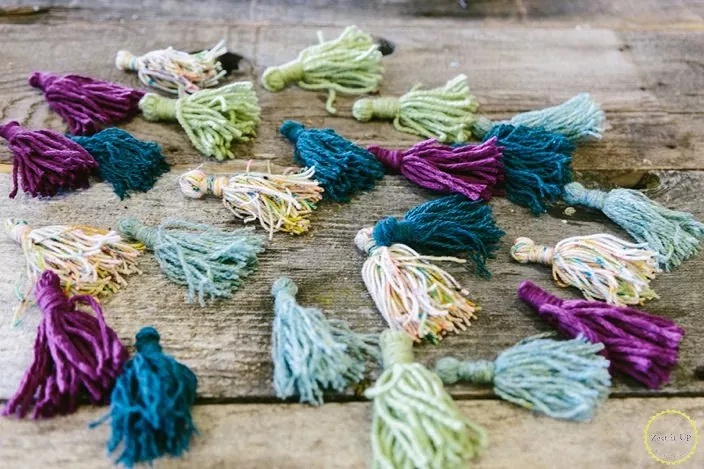


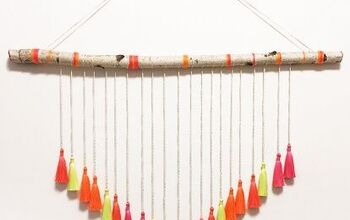




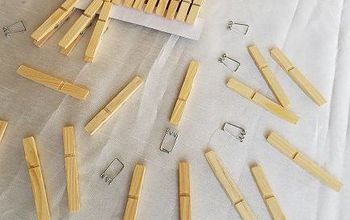

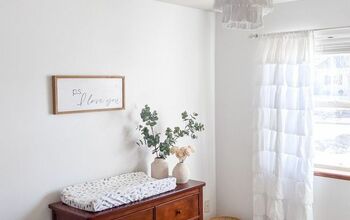


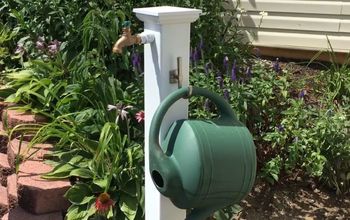









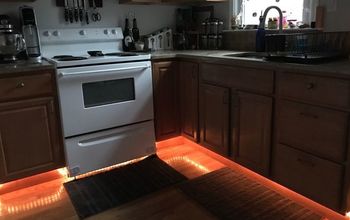
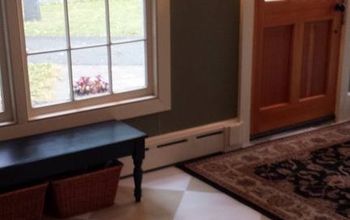
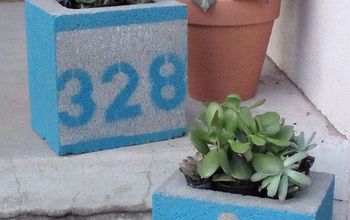

Frequently asked questions
Have a question about this project?